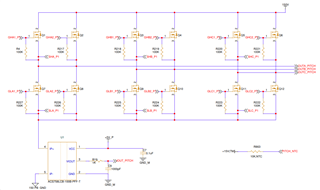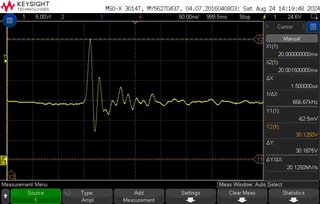Other Parts Discussed in Thread: UCC21550, UCC21520, UCC21551
Tool/software:
Hi,
I'm using one gate driver signal to drive two FETs in parallel to manage current requirement of Motor in H-bridge Configuration (<75A).
But, UCC21521 driver failure observed when gate driver fed with VCC Input (3.3V). In specific, failure happens on low-side gate driver section.
Schematic was attached for your reference.


Gate driver design requirements
Power transistor - NVHL027N65S3F
VCC - 5.0 V
VDD - 15 V
Input signal amplitude 3.3 V
Switching frequency (fs) -20 kHz
DC link voltage -150 V
I'm quite unclear about failure root cause .To Counter the Issue, I need your expertise on the same.



